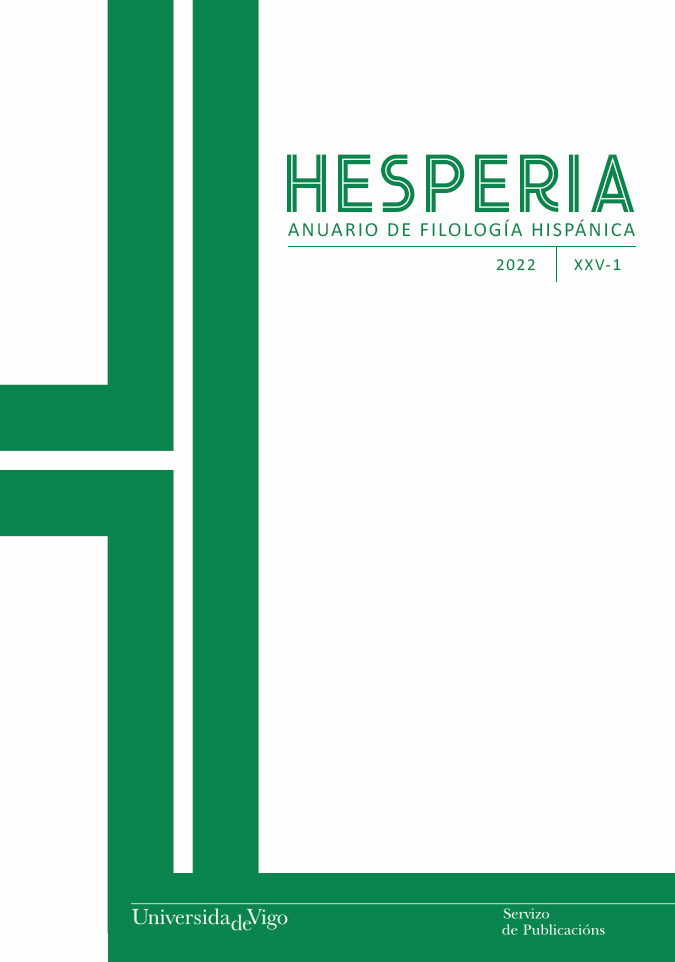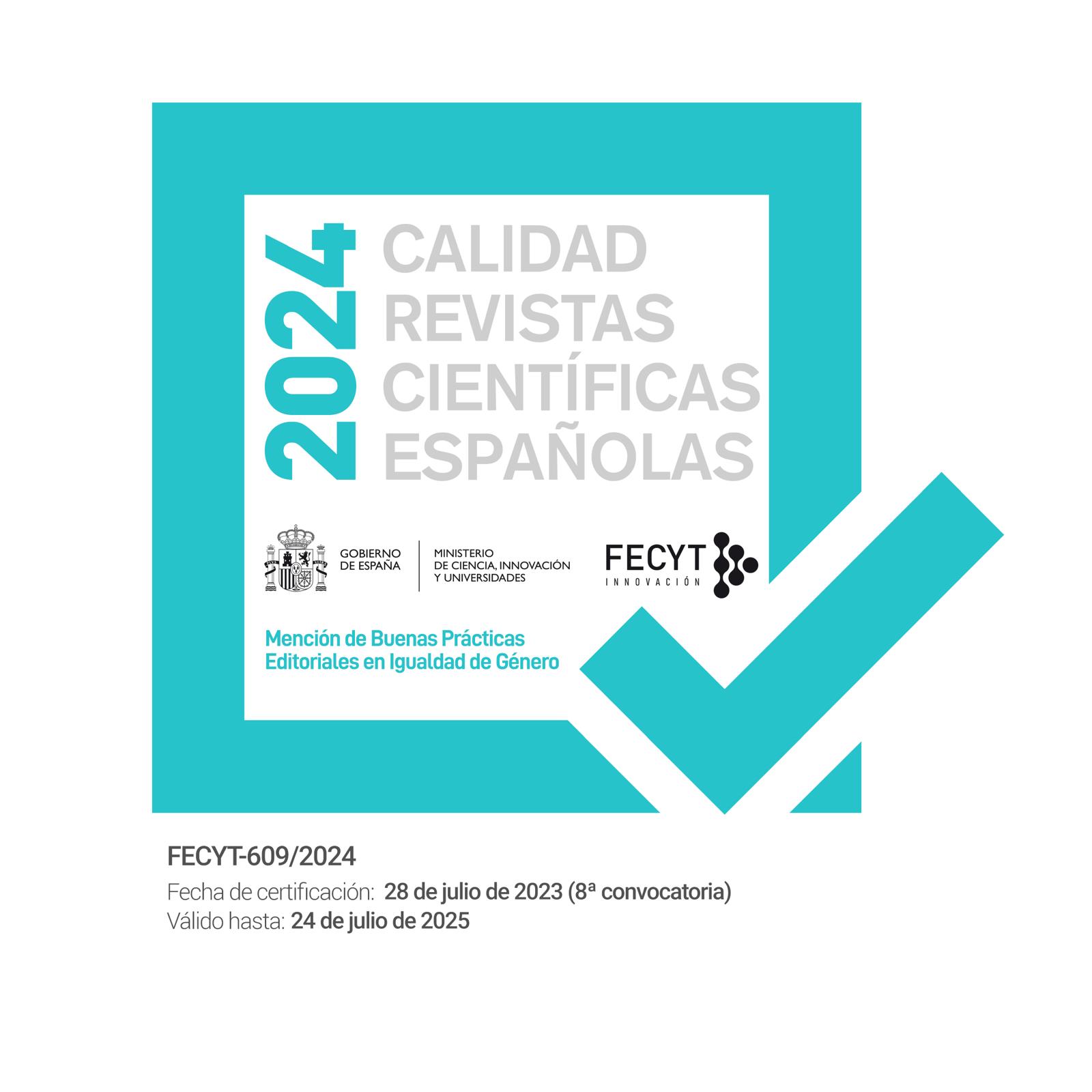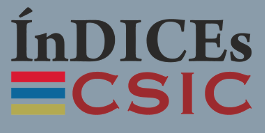On the operability (or not) of conversion as a lexicogenetic process in spanish
DOI:
https://doi.org/10.35869/hafh.v25i1.4193Keywords:
word formation, conversion, substitution, deverbal nouns, denominal verbsAbstract
Although conversion has traditionally been a neglected morphological phenomenon in Romance studies, this has not prevented heterogeneous criteria to delimitate conversion and apply it to Spanish. Equally diverse are types of derived words that have been described as the result of conversion processes in our language. I summarize the literatura on the very definition of conversion and the difficulties of trying to operate with such a process of word formation in what concerns the analysis of specific examples in Spanish. This paper focuses on how this lexicogenetic process has been applied to the description of some denominal verbs (plancha > planchar) and deverbal nouns (comprar > compra). Despite the fact that examples like these are the ones that have most frequently been regarded as instances of conversion, the analysis proposed here will show that, far from supporting the uncontroversial definition of the phenomenon, the applicability of conversion in Spanish gives rise to more loose ends and questions without consensus than to theoretical, analytical and descriptive solutions. Basically, conversion is troublesome because it is the result of trying to apply to the morphological description of Spanish (and other Romance languages) a process whose nature is much clearer and less controversial in Germanic languages, such as English (group (N) > (to) group (V), bottle (N) > (to) bottle (V)). I conclude that it is unadvisable to include conversion within the theoretical and descriptive apparatus of Spanish lexical morphology, being such a multifaceted, diffuse and fluctuating concept that even seems to go beyond the limits of word formation, sliding towards the more strictly syntactic or lexical components of language.
Downloads
References
Alonso-Cortés, Ángel (1991-1992). Una nota sobre conversión categorial. Dicenda (Estudios de lengua y literatura españolas), 10, 11-20.
Camus, Bruno (2022). La formación de palabras. Arco/Libros.
Don, Jan; Trommelen, Mieke y Zonneveld, Wim (2000). Conversión and category indeterminacy. En Geert E. Booij et alii: Morphologie / Morphology: Ein internationales Handbuch zur Flexion und Wortbildung / An International Handbook of Inflection and Word Formation (pp. 943-952). Walter de Gruyter.
Pena, Jesús (1991). La palabra: estructura y procesos morfológicos. Verba (Anuario Galego de Filoloxía), 18, 69-128.
Pena, Jesús (1993). La formación de verbos en español: la sufijación verbal. En Soledad Varela (ed.). La formación de palabras (pp. 217-281). Taurus.
Pena, Jesús (1994). Formación de palabras. Sobre los procesos conversión y sustracción. En Alegría Alonso González, Beatriz Garza Cuarón y J. Antonio Pascual Rodríguez (eds.). II Encuentro de lingüistas y filólogos de España y México (Salamanca, 25-30 septiembre de 1991) (pp. 49-61). Universidad de Salamanca / Junta de Castilla y León.
Pena, Jesús (1999). Partes de la Morfología. Las unidades del análisis morfológico. En Ignacio Bosque y Violeta Demonte (dirs.). Gramática Descriptiva de la Lengua Española. (pp. 4305-4366). Espasa.
Pena, Jesús (2018). La Base de datos Morfológica del español (BDME): Caracterización y estructura. En M.ª Pilar Garcés (ed.). Perspectivas teóricas y metodológicas en la elaboración de un diccionario histórico (pp. 17-61) Iberoamericana/Vervuert.
Pena, Jesús (2020). Sobre la reinterpretación de algunos procesos derivativos en la Base de datos morfológica del español (BDME). Verba (Anuario Galego de Filoloxía), 47, 357-378.
RAE-ASALE (2019). Glosario de términos gramaticales. Ediciones Universidad de Salamanca.
Rainer, Franz (1993). Spanische Wortbildungslehre. Max Niemeyer.
Rainer, Franz (2012). Escarceos sobre la conversión sustantivo adjetivo en español. En Antonio Fábregas, Elena Felíu, Josefa Martín y José Pazó (eds.). Los límites de la morfología. Estudios ofrecidos a Soledad Varela Ortega (pp. 369-382). Servicio de Publicaciones de la Universidad Autónoma de Madrid
Rainer, Franz (2016). Spanish. En Peter O. Müller, Ingeborg Ohnheiser, Susan Olsen y Franz Rainer (eds.). Word-Formation (An International Handbook of the Languages of Europe) (pp. 2620-2640). De Gruyter Mouton.
Serrano-Dolader, David (1995). Las formaciones parasintéticas en español. Arco/libros.
Thornton, Anna M.; Grossmann, Maria; Siller-Runggaldier, Heidi y Ricca, Davide (2004). Conversione. En Maria Grossmann y Franz Rainer (eds.). La formazione delle parole in italiano. (pp. 499-553). Niemeyer.
Valera, Salvador (2015). Conversion. En Peter O. Müller, Ingeborg Ohnheiser, Susan Olsen y Franz Rainer (eds.). Word-Formation (An International Handbook of the Languages of Europe) (pp. 322-339). De Gruyter Mouton.
Valera, Salvador (2021). Main morphological formal means (III): Approaches to conversion. En Antonio Fábregas, Víctor Acedo-Matellán, Grant Armstrong, M.ª Cristina Cuervo, y Isabel Pujol Payet (eds.). The Routledge Handbook of Spanish Morphology (pp. 40-54). Routledge.















